Click images for results and details
Hair Loss Continuing After Scalp Micropigmentation
Male, age 32 at time of treatment Hair loss started at 27
Man who started experiencing pattern hair loss at age 27 decided camouflage his progressive lack of hair coverage with scalp micropigmentation, a cosmetic procedure using scalp tattooing to simulate hair density. However, with progressive pattern hair loss, by age 32 the tattoos became more visible and were not concealing his frontal hair recession.He came in for consultation, and had the Hair Regeneration treatment. He never took finasteride, but was prescribed the DHT-blocker the same time as treatment.Hair coverage receding at the hairline, showing only the shadow look of micropigmentation. Scalp microscopy showed hairs were still present, but too thinned to be visible over the micropigmentation.
He came back for follow up 5 months after his treatment. He was very impressed with new hair growth at his hairline, and was no longer self-conscious about his micropigmentation being revealed by the lack of hair coverage. His new hair coverage blended well with scalp pigmentation, giving him a more natural, full look.One Hair Regeneration treatment was able to stimulate hair growth and thicken thinning hair at the frontal hairline, which enabled better blending of new hair coverage with the surrounding micropigmentation for a more natural look.
Male, age 23 at time of treatment Hair loss started at age 21
23-year-old man was on finasteride for over year to control DHT prior to his consultation. He was facing diffuse pattern hair thinning all over his head, with frontal hairline and temporal recession. 4 months after one Hair Regeneration treatment, his frontal hairline had thicker hair growth, and his temporal areas increases their hair density. An overview of the top of his scalp shows thicker, healthier hair growth throughout. He also stated that the texture of his hair felt healthier soon after treatment.This case shows the potential synergistic benefit of combining finasteride and Hair Regeneration, especially among younger patients with high DHT-sensitivity. It also shows the mechanism of Hair Regeneration that stimulates thicker hair growth, and hair growth in areas that were not growing while on finasteride for over a year. This shows that the effects of Hair Regeneration on hair growth are entirely separate from a DHT-blocker that slows hair thinning.Even with the slowdown of hair thinning with finasteride, the Hair Regeneration treatment can stimulate thicker hair growth, and achieve new hair growth where hair has stopped growing.
Hair texture and density can be improved with the Hair Regeneration treatment, especially for patients already on finasteride who still want more coverage.
Aggressive Male Pattern Hair Loss Without Finasteride
Male, age 25 at time of treatment, 26 at follow up Hair loss started at age 19
A 25-year-old man with high DHT-sensitivity started losing hair at age 19. He didn’t seek treatment or medication for it, including minoxidil and finasteride, until he was 25 and his pattern hair loss was already quite advanced. He started with a single Hair Regeneration treatment at age 25. Finasteride is usually prescribed to Hair Regeneration patients at this age range due to high DHT-sensitivity, but it wasn’t taken. Hair Regeneration is not recommended as a finasteride alternative. 14 months after treatment, at the age of 26, he achieved significantly dense hair growth and thickening atop his scalp. This type of result could not have been achieved with multiple hair transplants as natural hair density is spaced closer together than hair transplants can achieve, and men under 30 lose hair faster than it can be transplanted. A hair transplant with this much thinning hair still present at the scalp would have resulted in permanent collateral loss from the sharp hair implanter damaging nearby native hair.Although the results were achieved without finasteride, it is important for most men with early and aggressive pattern hair loss to be on a DHT-blocker along with the Hair Regeneration treatment.Significant thickening of thinning hair, and growth of dormant hair follicles achieved in one Hair Regeneration treatment without finasteride, although finasteride is recommended for highly DHT-sensitive male patients even with this treatment.
Male, age 23 at time of treatment Hair loss started at age 21
This man started to notice hair thinning at age 21, but by age 23 he had not tried pharmaceuticals like finasteride or minoxidil to treat it. He received one Hair Regeneration treatment, as well as a prescription for finasteride to help control his DHT level in the bloodstream. 12 months after treatment, he was able get thicker hair growth at this hairline, and short, miniaturized hairs at his temples that were almost lost were now growing thicker and longer.After the Hair Regeneration treatment, thickness and quality of hair at the hairline were improved.
Fine hair at the temples became visibly thicker and darker after the Hair Regeneration treatment.
Late Onset Hair Loss Treatment without Finasteride
Male, age 49 at time of treatment and follow up
49-year-old man started losing hair about 10 years prior to consultation, so his age of onset was relatively late, and DHT-sensitivity moderate. He had a slow, diffuse hair thinning pattern, and also had thinning at the temples. With later onset and less aggressive pattern hair loss, DHT-sensitivity is not as high, so he wasn’t on finasteride.10 months after the Hair Regeneration treatment without taking finasteride, he gained more scalp hair coverage with thicker growth, and was able to get new growth at the temples.Scalp and crown hair coverage increased with a thicker caliper of hair after one Hair Regeneration session. No finasteride was prescribed due to later onset, and less aggressive hair loss due to lower DHT-sensitivity.
For men who start losing hair in their teens, 20s, and early 30s, finasteride is almost always prescribed with Hair Regeneration. Early onset of hair loss is directly linked to high DHT-sensitivity, so a DHT-blocker is needed in these cases. However, for later onset and less aggressive pattern hair loss occuring in the late 30s or older, a DHT-blocker is not as critical, and determined in individual cases.Hairline recession and thinning are common signs of male pattern hair loss, but the treatment was able to thicken miniaturized hairs, and stimulate growth of dormant follicles at the frontal hairline.
Improving hair density after several hair transplants
Male, age 39 at time of treatment, age 40 at follow up Hair loss started age 17
A man who started losing hair very early at 17 ended up having 3 FUT or strip transplants, and 3 FUE hair transplants. He has been wearing his hair short to better blend his thin native hair with his thicker transplanted hair. With such early hair loss and multiple transplant surgeries, he has been highly DHT-sensitive his whole adult life, but only started using the DHT-blocker finasteride 5 years prior to his first consultation with us at age 39.We treated him Hair Regeneration at age 39, and we reviewed his final results after 14 months at age 40. During his time between treatment and follow up, he felt his hair growing thick and strong enough to change to a longer hairstyle. He happily told us that his hair has not felt this healthy in over 20 years. This case shows that even with early onset of hair loss, and multiple transplants, hair thickness, density, and coverage can still be improved with the Hair Regeneration treatment.Even with multiple hair transplants and remaining thinning native hair, hair density can appear sparse. By thickening thinning hair and stimulating healthier growth with Hair Regeneration, scalp density can still be improved to look more natural.

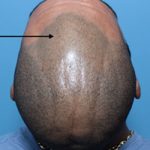
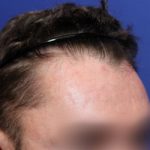
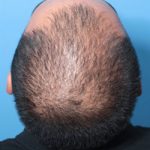
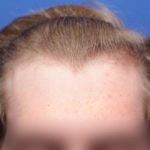
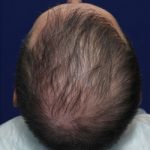
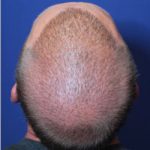
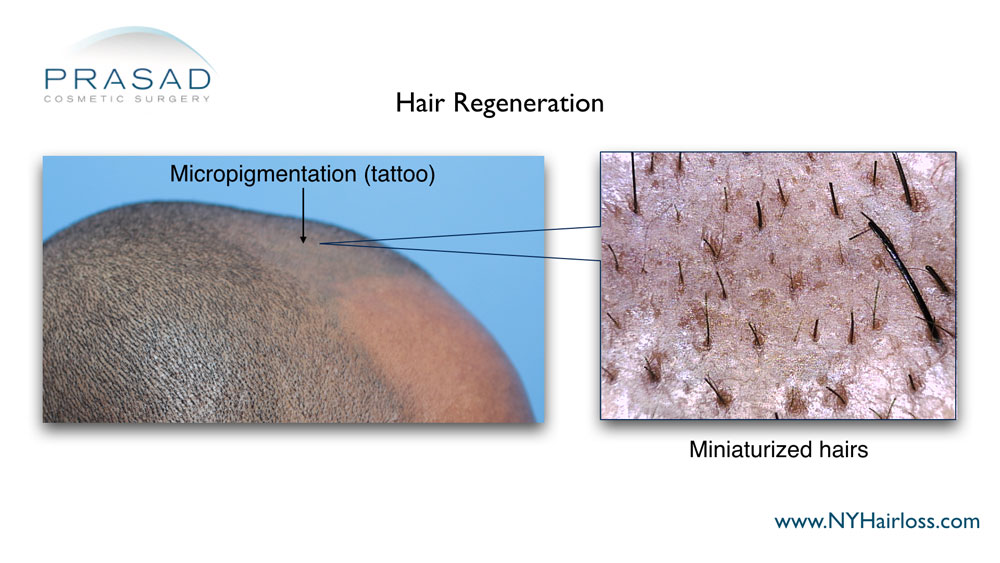 Hair coverage receding at the hairline, showing only the shadow look of micropigmentation. Scalp microscopy showed hairs were still present, but too thinned to be visible over the micropigmentation.
Hair coverage receding at the hairline, showing only the shadow look of micropigmentation. Scalp microscopy showed hairs were still present, but too thinned to be visible over the micropigmentation.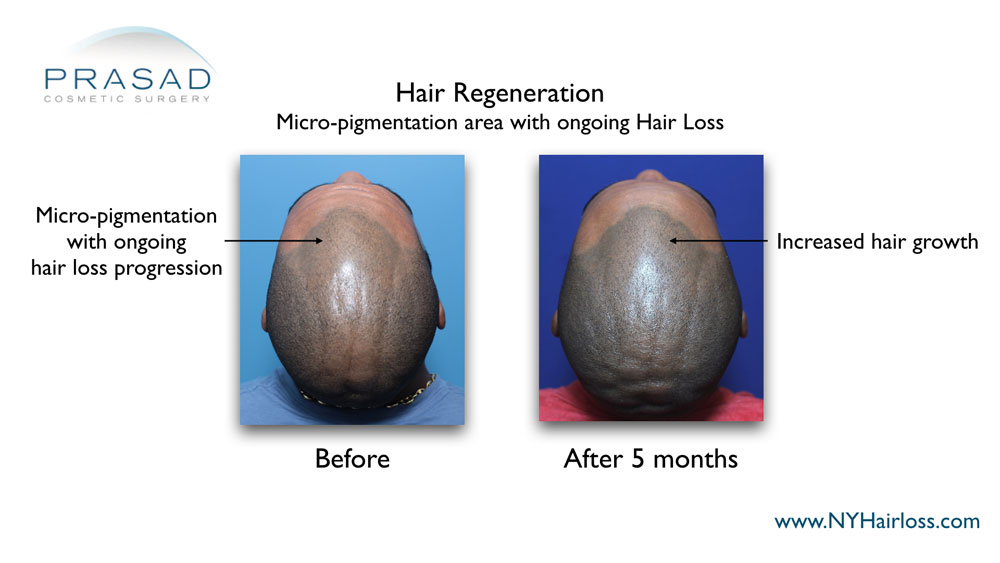 One Hair Regeneration treatment was able to stimulate hair growth and thicken thinning hair at the frontal hairline, which enabled better blending of new hair coverage with the surrounding micropigmentation for a more natural look.
One Hair Regeneration treatment was able to stimulate hair growth and thicken thinning hair at the frontal hairline, which enabled better blending of new hair coverage with the surrounding micropigmentation for a more natural look.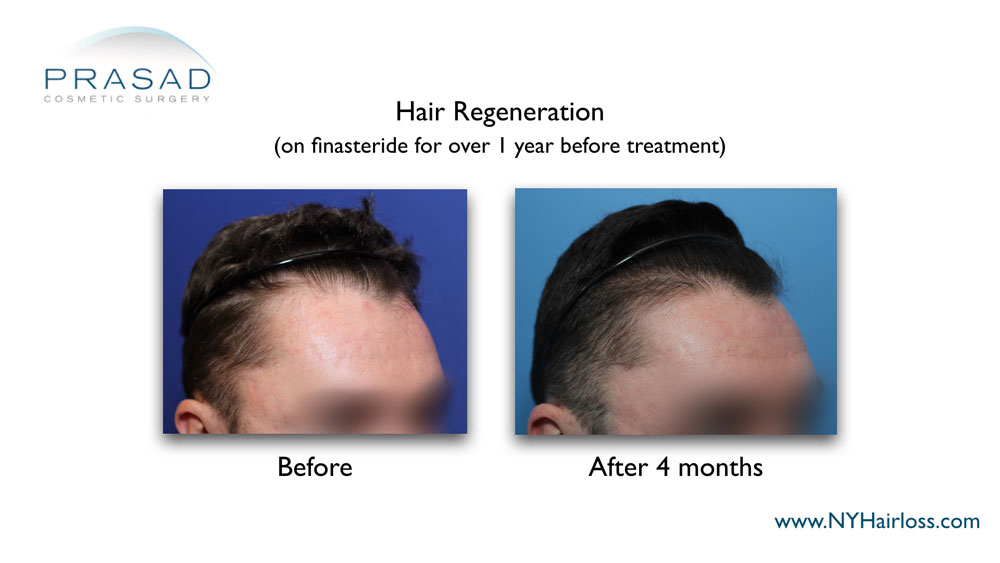 Even with the slowdown of hair thinning with finasteride, the Hair Regeneration treatment can stimulate thicker hair growth, and achieve new hair growth where hair has stopped growing.
Even with the slowdown of hair thinning with finasteride, the Hair Regeneration treatment can stimulate thicker hair growth, and achieve new hair growth where hair has stopped growing.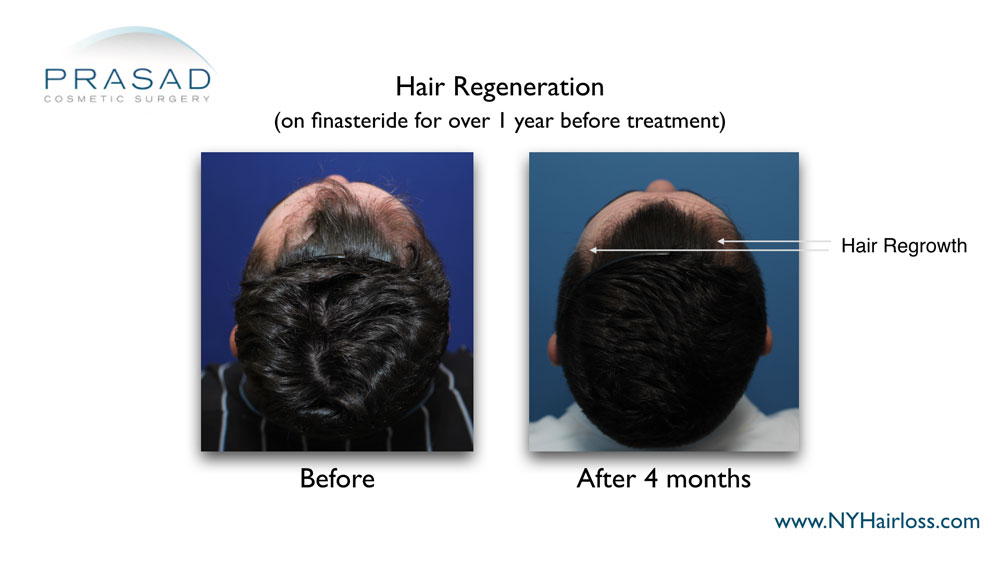 Hair texture and density can be improved with the Hair Regeneration treatment, especially for patients already on finasteride who still want more coverage.
Hair texture and density can be improved with the Hair Regeneration treatment, especially for patients already on finasteride who still want more coverage. Significant thickening of thinning hair, and growth of dormant hair follicles achieved in one Hair Regeneration treatment without finasteride, although finasteride is recommended for highly DHT-sensitive male patients even with this treatment.
Significant thickening of thinning hair, and growth of dormant hair follicles achieved in one Hair Regeneration treatment without finasteride, although finasteride is recommended for highly DHT-sensitive male patients even with this treatment.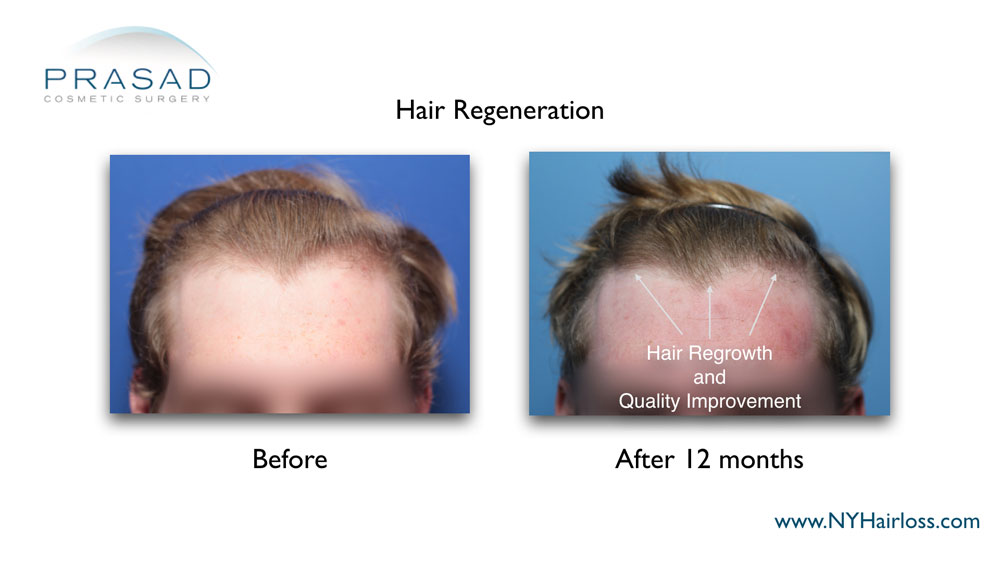 After the Hair Regeneration treatment, thickness and quality of hair at the hairline were improved.
After the Hair Regeneration treatment, thickness and quality of hair at the hairline were improved.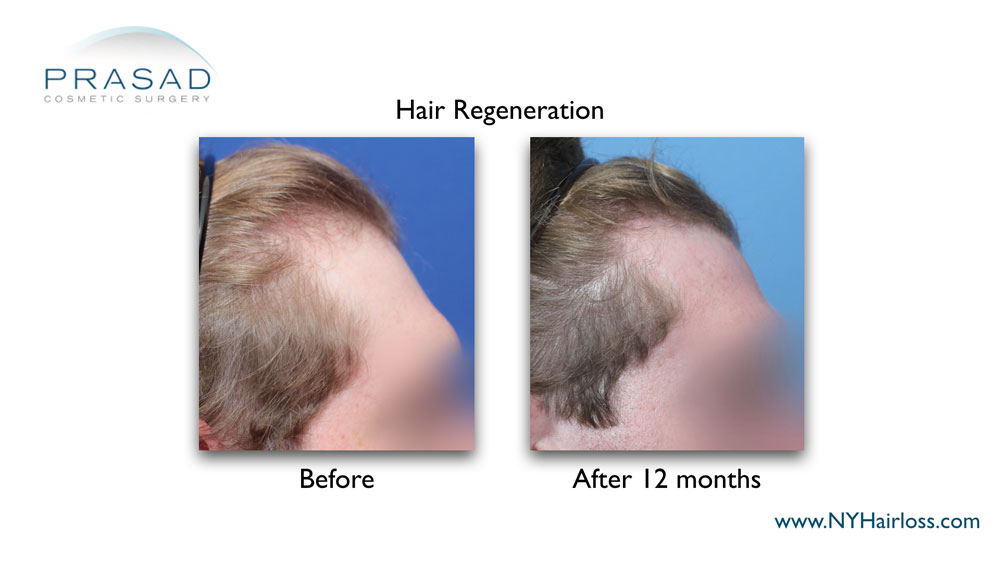 Fine hair at the temples became visibly thicker and darker after the Hair Regeneration treatment.
Fine hair at the temples became visibly thicker and darker after the Hair Regeneration treatment.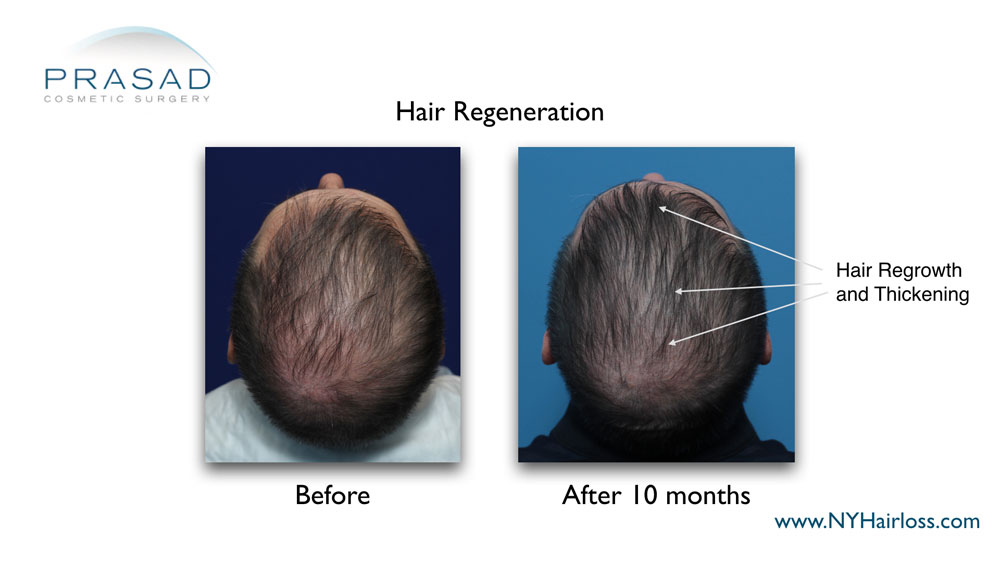 Scalp and crown hair coverage increased with a thicker caliper of hair after one Hair Regeneration session. No finasteride was prescribed due to later onset, and less aggressive hair loss due to lower DHT-sensitivity.
Scalp and crown hair coverage increased with a thicker caliper of hair after one Hair Regeneration session. No finasteride was prescribed due to later onset, and less aggressive hair loss due to lower DHT-sensitivity.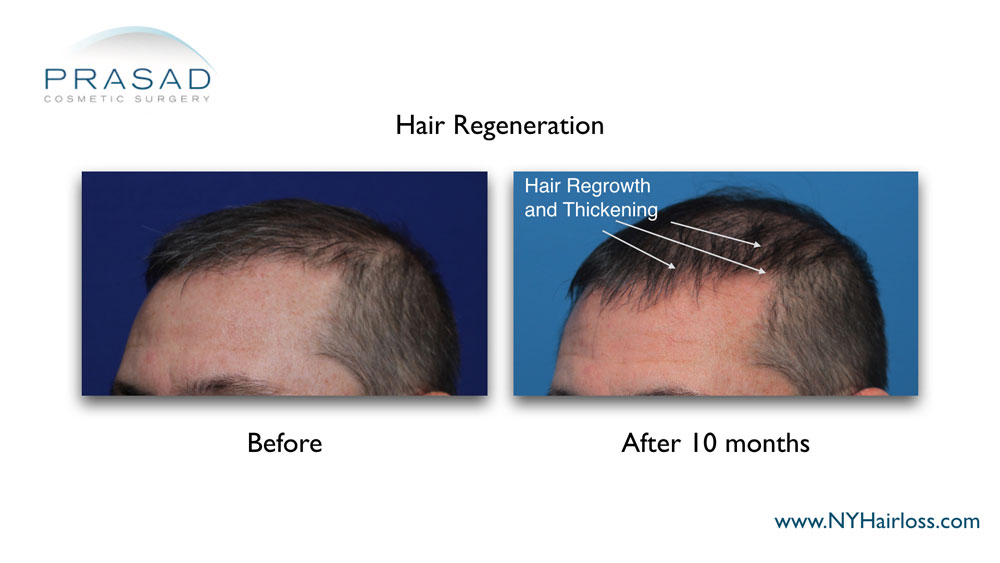 Hairline recession and thinning are common signs of male pattern hair loss, but the treatment was able to thicken miniaturized hairs, and stimulate growth of dormant follicles at the frontal hairline.
Hairline recession and thinning are common signs of male pattern hair loss, but the treatment was able to thicken miniaturized hairs, and stimulate growth of dormant follicles at the frontal hairline.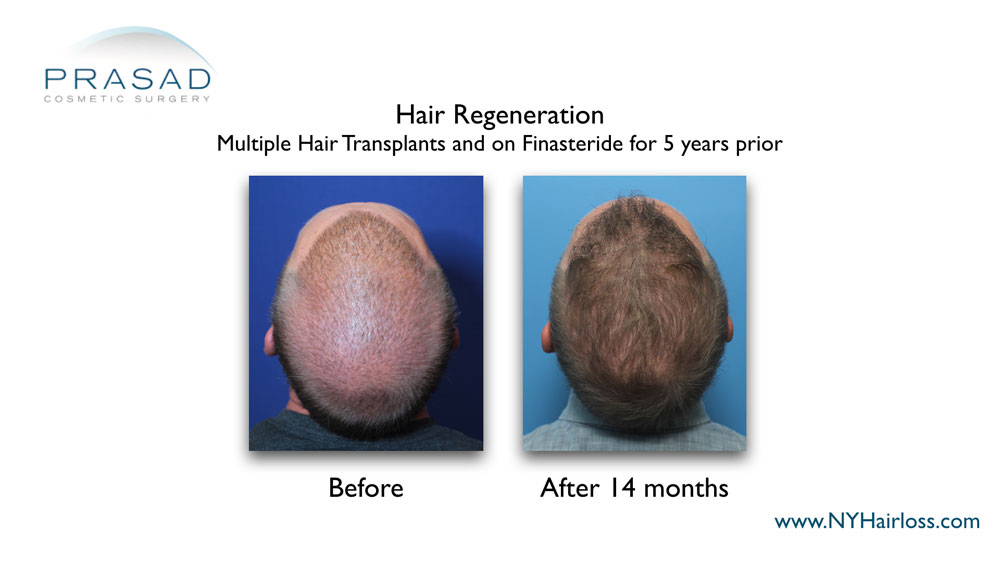 Even with multiple hair transplants and remaining thinning native hair, hair density can appear sparse. By thickening thinning hair and stimulating healthier growth with Hair Regeneration, scalp density can still be improved to look more natural.
Even with multiple hair transplants and remaining thinning native hair, hair density can appear sparse. By thickening thinning hair and stimulating healthier growth with Hair Regeneration, scalp density can still be improved to look more natural.